新加坡共和国
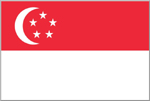
Asian nexus of commerce and industry

At the southern tip of the Southeast Asian peninsula is the small independent nation of Singapore: financial centre, business hub and true city-state. Its founder, Sir Thomas Stamford Raffles, kicked things off in 1819 and is well remembered to this day throughout the city for his dream of a tax-free haven for trade on the Malacca Straits. Singapore was a British colony until 1965 when it gained full independence. Singapore is a cultural melting pot of Chinese, Malay, Indian and other minority ethnicities, and is often the starting point for tourist trips throughout the region – I have heard it called “Asia for beginners”.
My first visit to Singapore was in 1988 and only for one night on our way to Penang, Malaysia. I distinctly remember not wanting to go, as singing a pore (whatever that was) sounded really boring. I eventually returned in early 2009 to visit friends, while I was living in Tanggu, China. As well as the places showcased below, Singapore has one of the best zoos I’ve ever been to, with a great night safari tour.
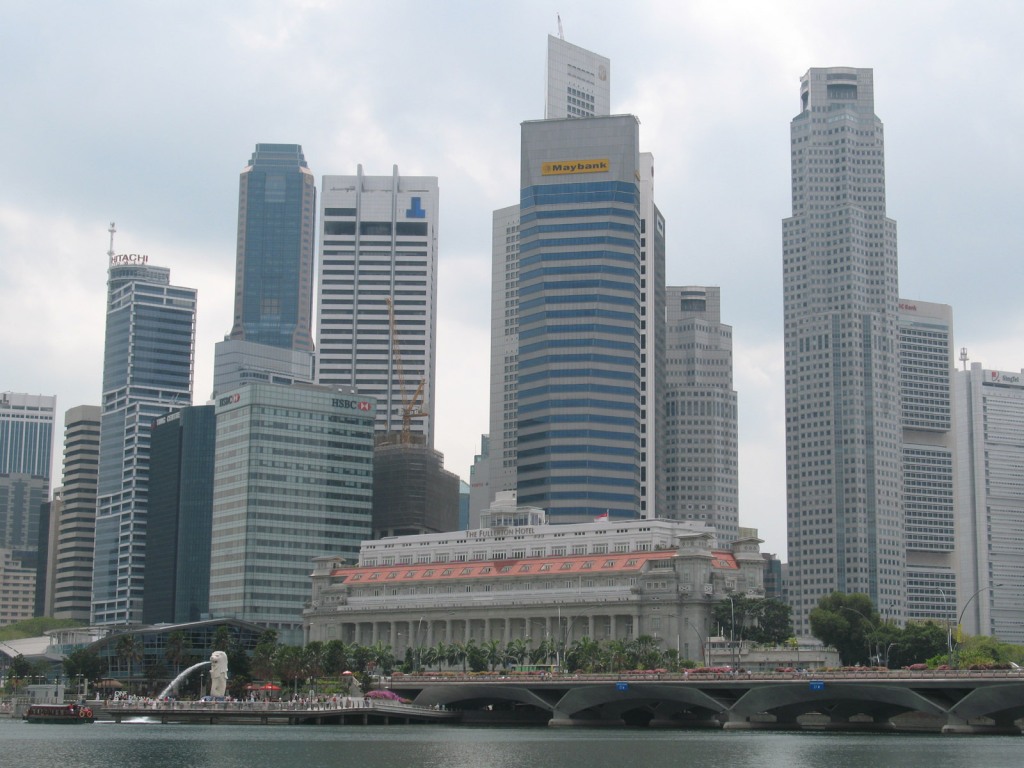
The central business district of Singapore makes the city’s status as a commercial and trading centre highly apparent. It has been highly developed with the three most prominent towers dating back to the 1980s and all exactly the same height, due to aviation-driven restrictions.
The Merlion is a tourist icon of Singapore and the country’s official mascot – why not, if Scotland can have the unicorn? There are a few of them dotted about the city, this one spurting out seawater in front of the downtown skyline. The tower in the distance is Swissôtel the Stamford.
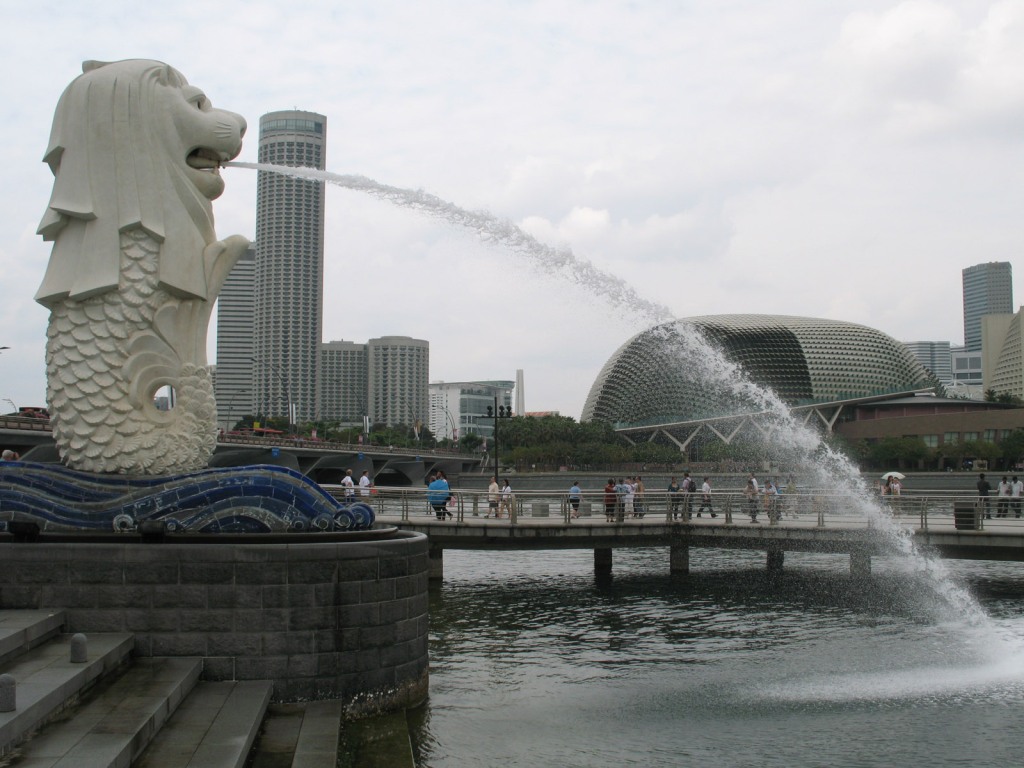

Anderson Bridge crosses the Singapore River from downtown to the north, and dates back to 1910. It has since been fully pedestrianised.
One of the four classically styled museums in central Singapore, the Asian Civilisations Museum contains artefacts from across the continent and back to antiquity.
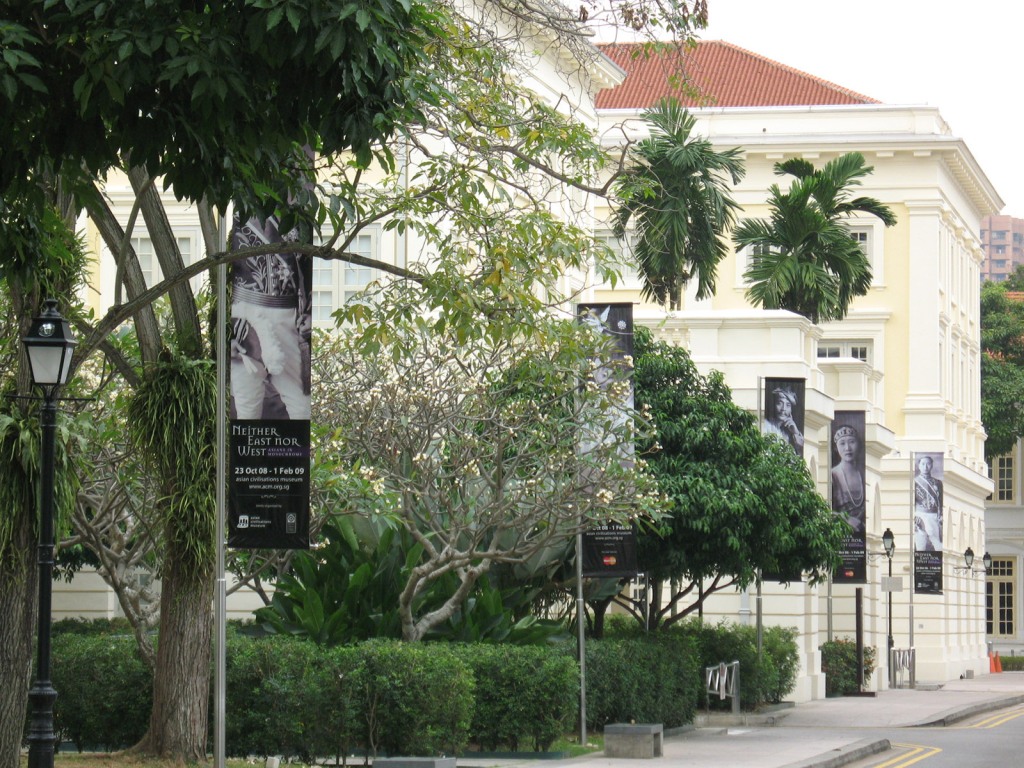
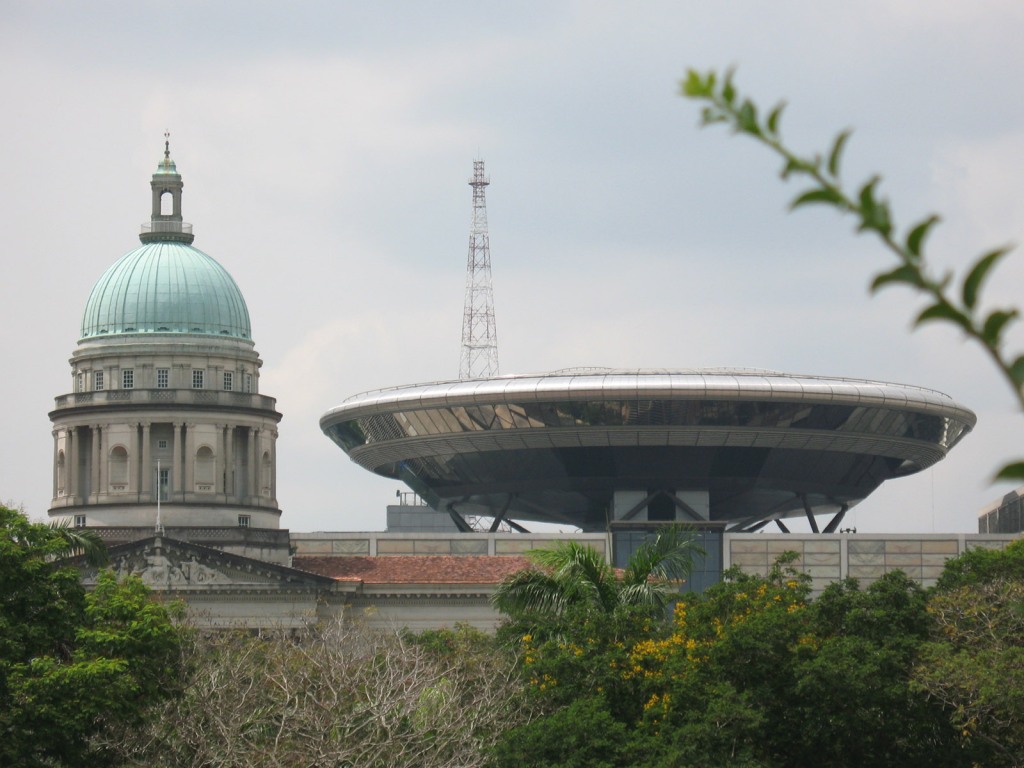
The Supreme Court of Singapore resembles a flying saucer touching down behind the dome of the National Gallery. It opened in 2005 and was designed by Sir Norman Foster, whose other works include London‘s Millennium Bridge and Gherkin, Berlin’s Reichstag dome, Hong Kong’s HSBC building, Sydney‘s Deutsche Bank and Glasgow‘s Armadillo.
Colourful rainbow stylings of the Old Hill Street Police Station on the Singapore River. It dates from 1934 and now serves as a government office.

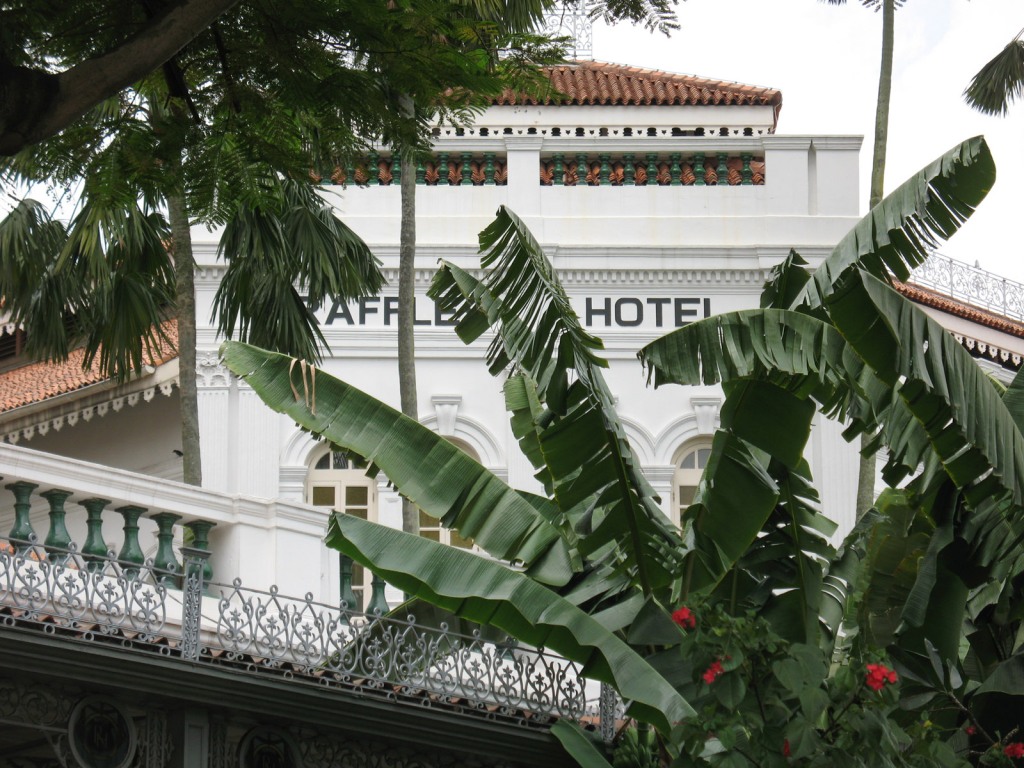
In honour of Sir Stamford, the Raffles Hotel still bears his name. It’s a charming colonial style grande dame, and is one of the best known hotels in the country together with the Marina Bay Sands, which during my 2009 visit was only just beginning to rise from its foundations.
The Raffles Hotel also hosts the Long Bar, which has the distinction of being the birthplace of the delicious Singapore Sling cocktail around 1915, but it’s certainly not the cheapest place to pick one up.
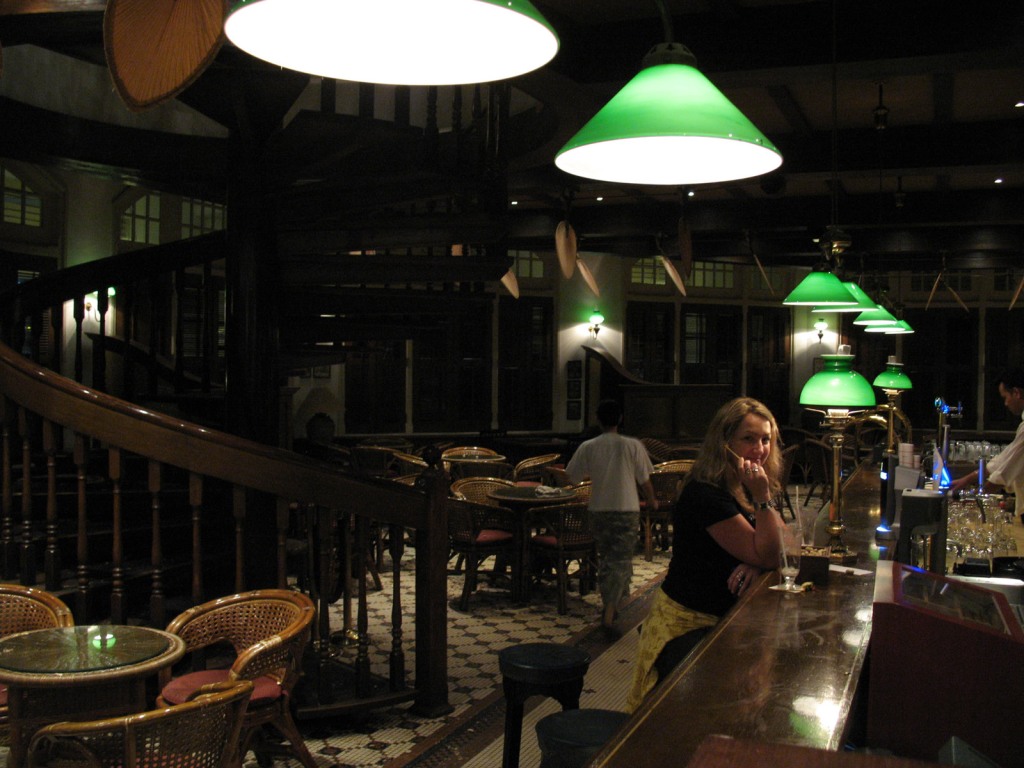
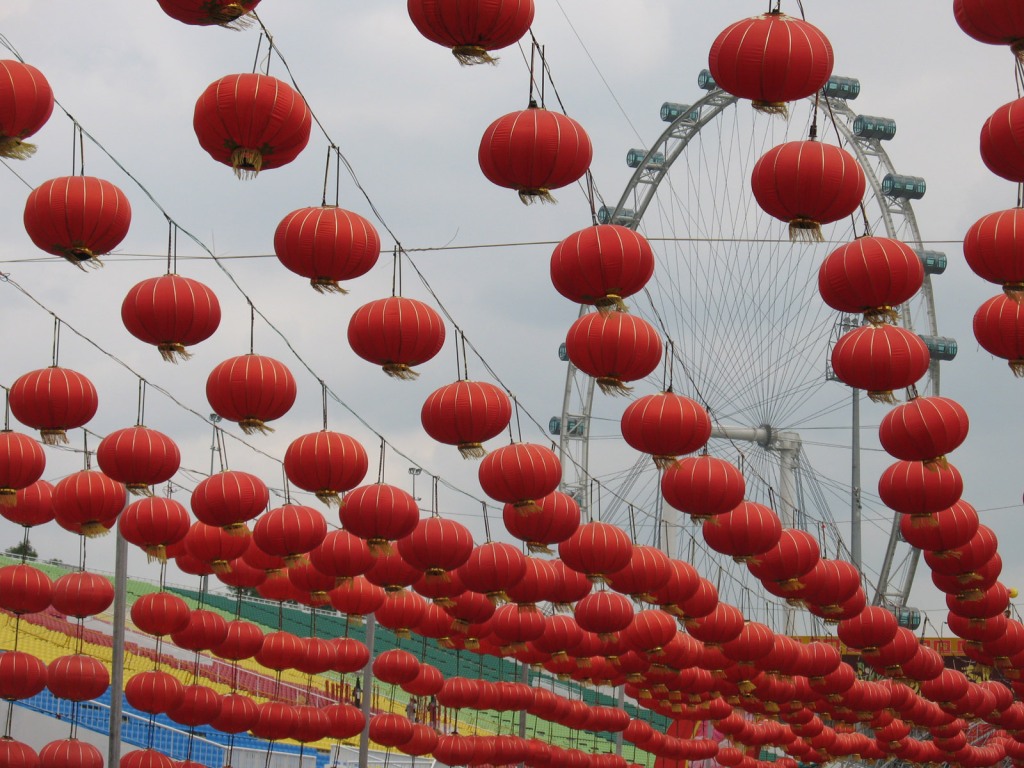
The Singapore Flyer is the city’s answer to the London Eye, but at the time of my 2009 visit it had unfortunately ground to a halt, having been open less than a year. The surrounding streets were dressed with lanterns for Chinese New Year.
The Esplanade Theatres on the Bay at resembles a gigantic pair of fly’s eyes, or a durian fruit as it is often referred to by locals since it opened in 2002.
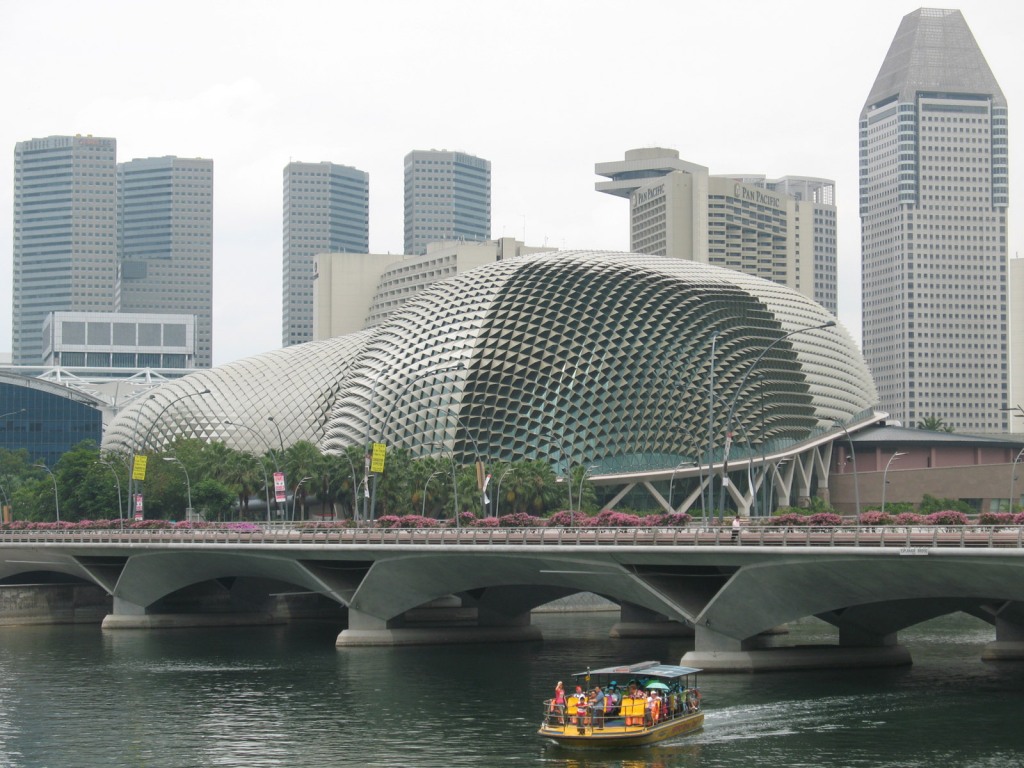

Clarke Quay, one of a number of collections of entertainment and watering establishments around town. We went to a place where customers are served drinks while lying on hospital beds. Just hook it up to my veins!
Singapore is a very ethnically diverse country, replete with places of worship for many dominations – this is the Hindu Sri Thendayuthapani Temple, built in 1859.
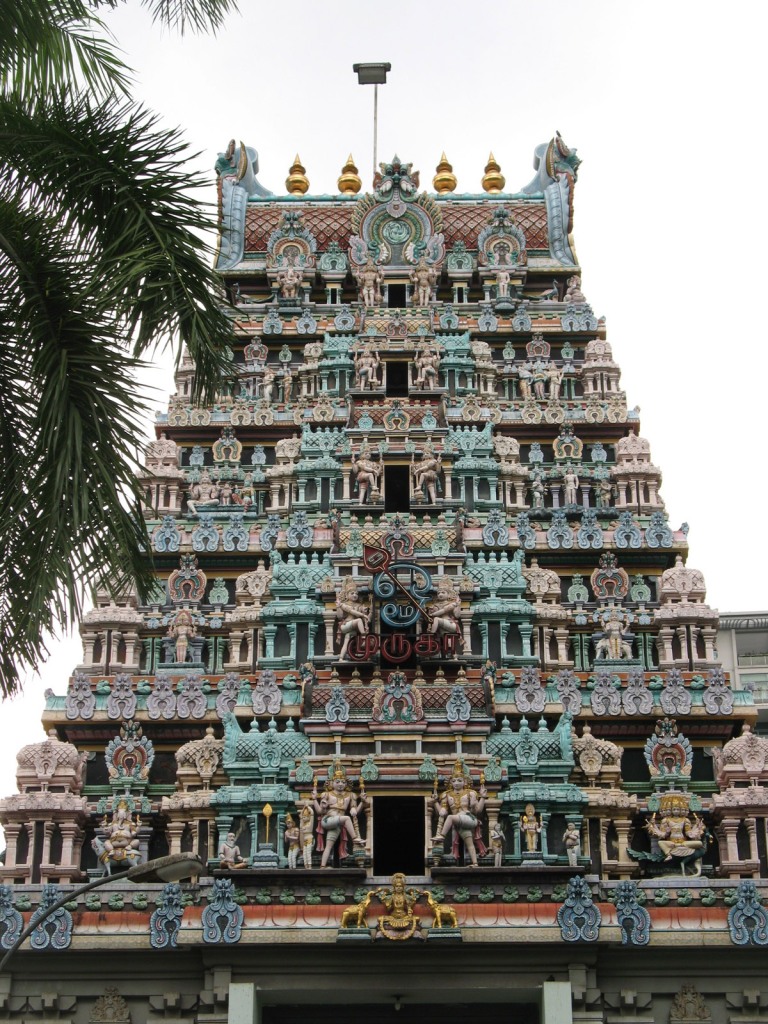
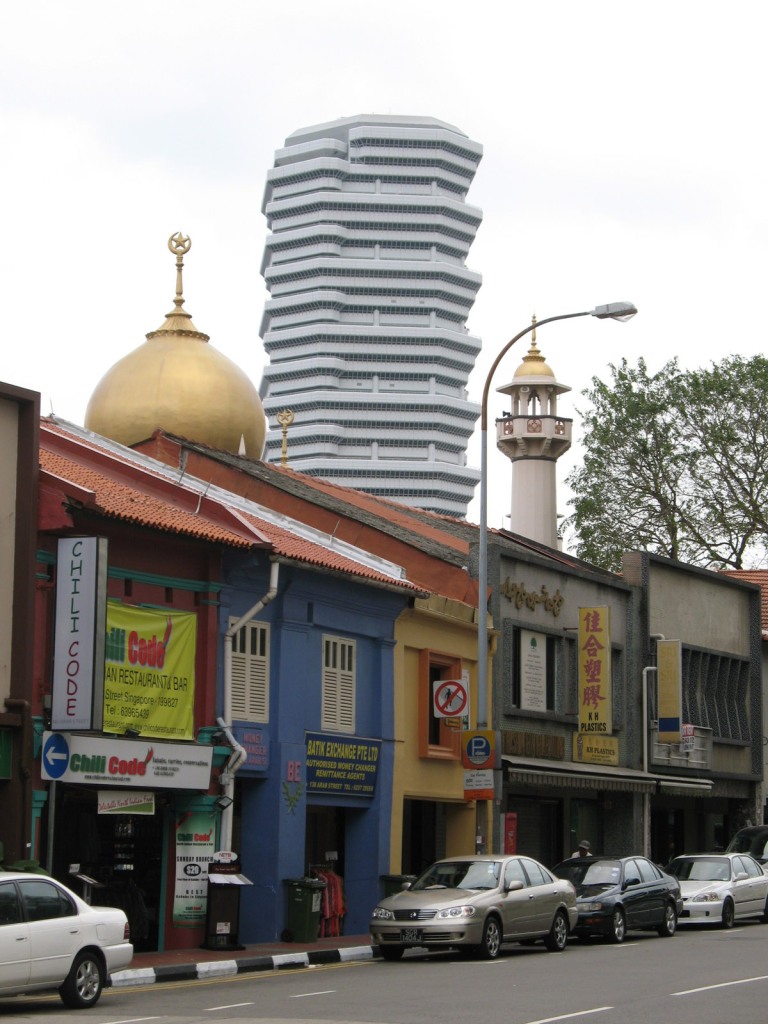
Singapore’s Islamic quarter, Arab Street was where I stayed in 2009 in the cheapest lodgings possible – a bunk in a hostel for £25 per night. The golden domes of the Sultan Mosque are watched over by The Concourse office tower.
Colourful apartment blocks brighten up the concrete of 1970s housing project the Rochor Centre, with Our Lady of Lourdes church and Swissotel the Stamford in the distance. The Rochor Centre was subsequently demolished in 2018 to make way for a new highway.
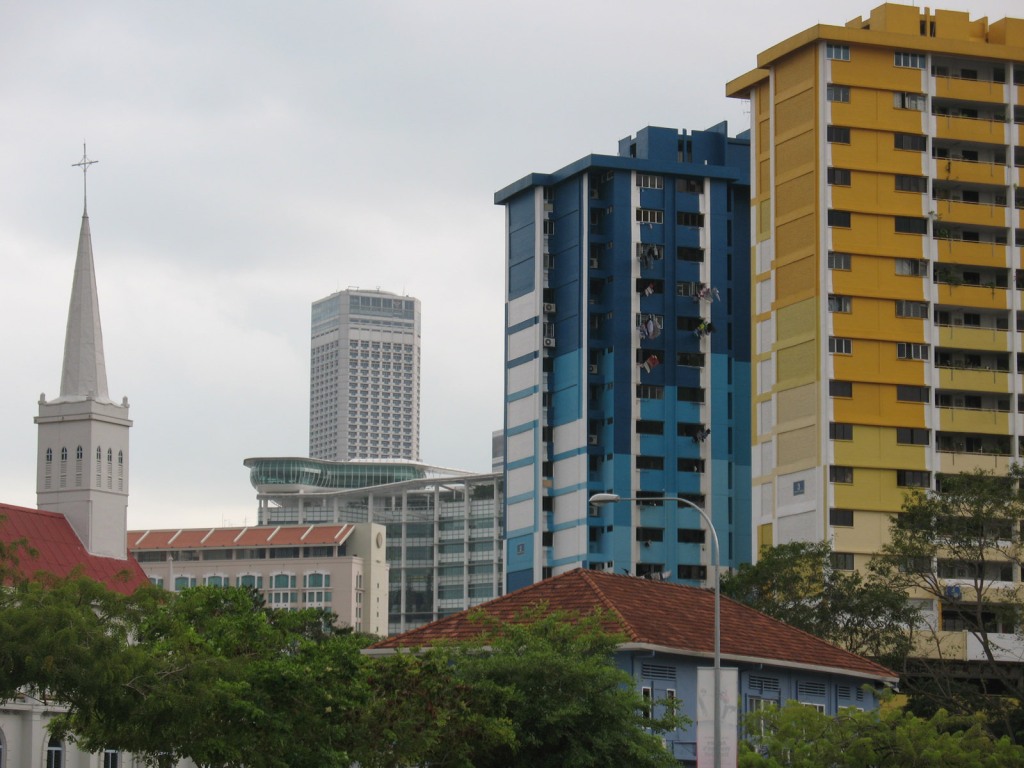

Another of Singapore’s culturally diverse areas, Little India was where I went to seek out lunch. Great curry could be had for small potatoes.
Abdul Gafood Mosque in Little India, ornately styled and dating back to 1907.


Dunlop Street is the main route through Little India, as busy and bustling as Bombay.
One of the local markets I found myself wandering through in Little India.
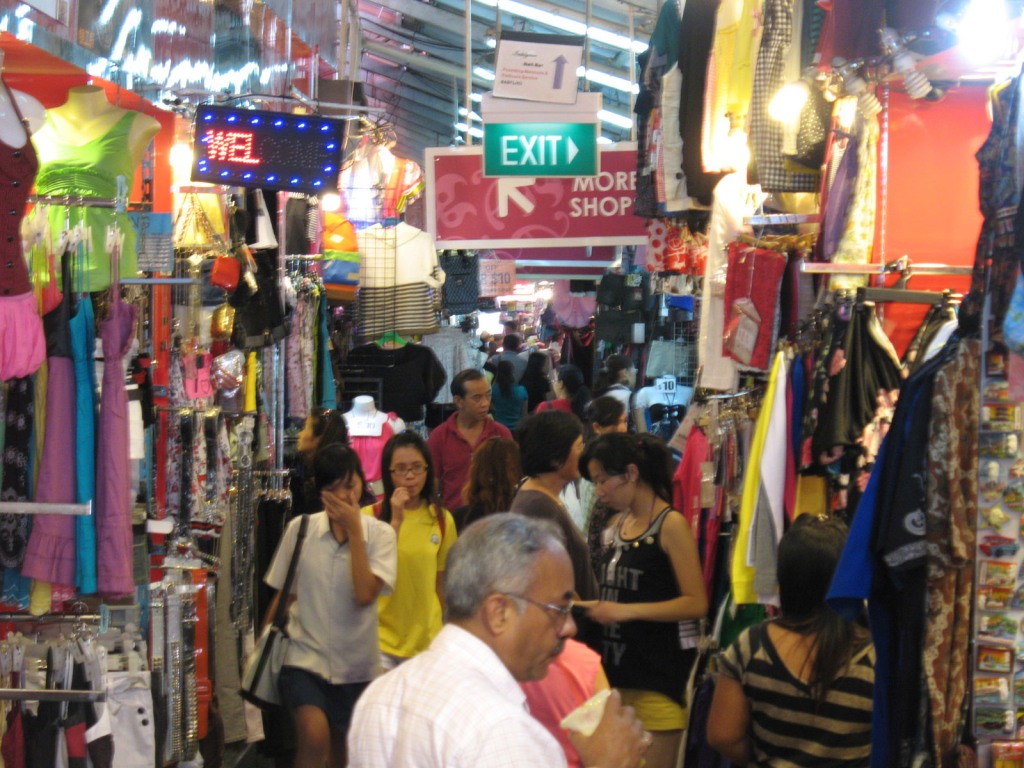
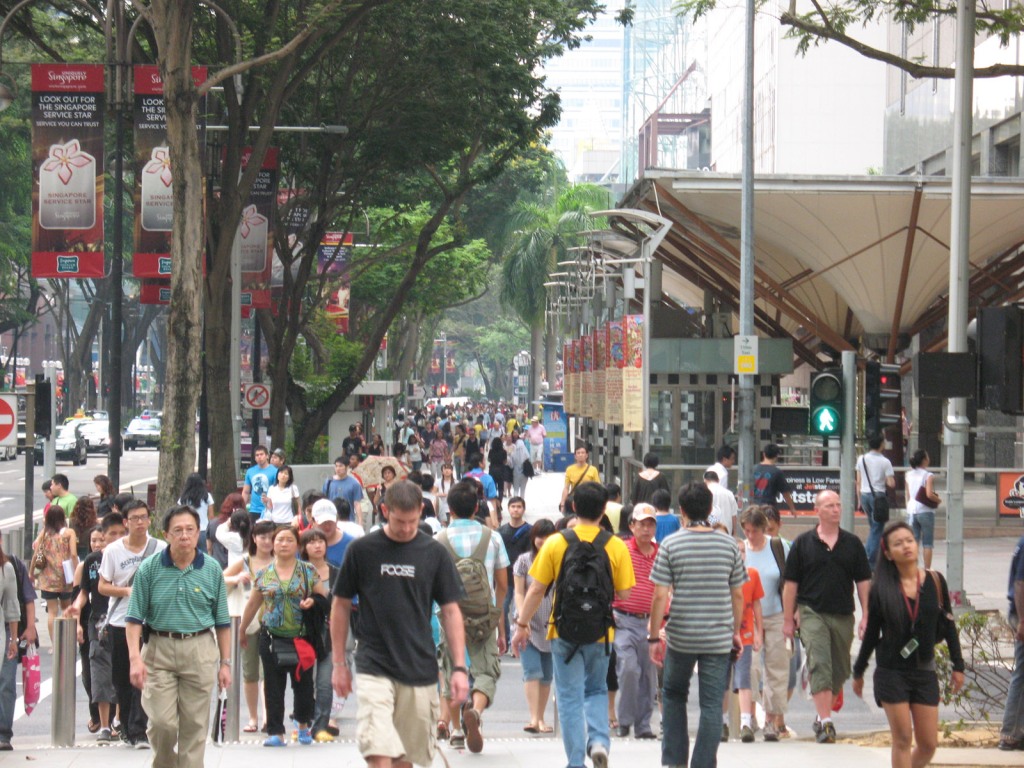
Commerce takes on a larger scale at Orchard Road, the central shopping area with multiple malls and high-end outlets galore. It was around this stage I realised that despite the overcast sky, I was getting sunburnt, which I really felt the next day in Indonesia.
The favourite past-time of Singaporeans seems to be shopping, certainly if the number of malls on Orchard Road is any indication. This is the dizzying atrium of Plaza Singapura, fully decked out for Chinese New Year.
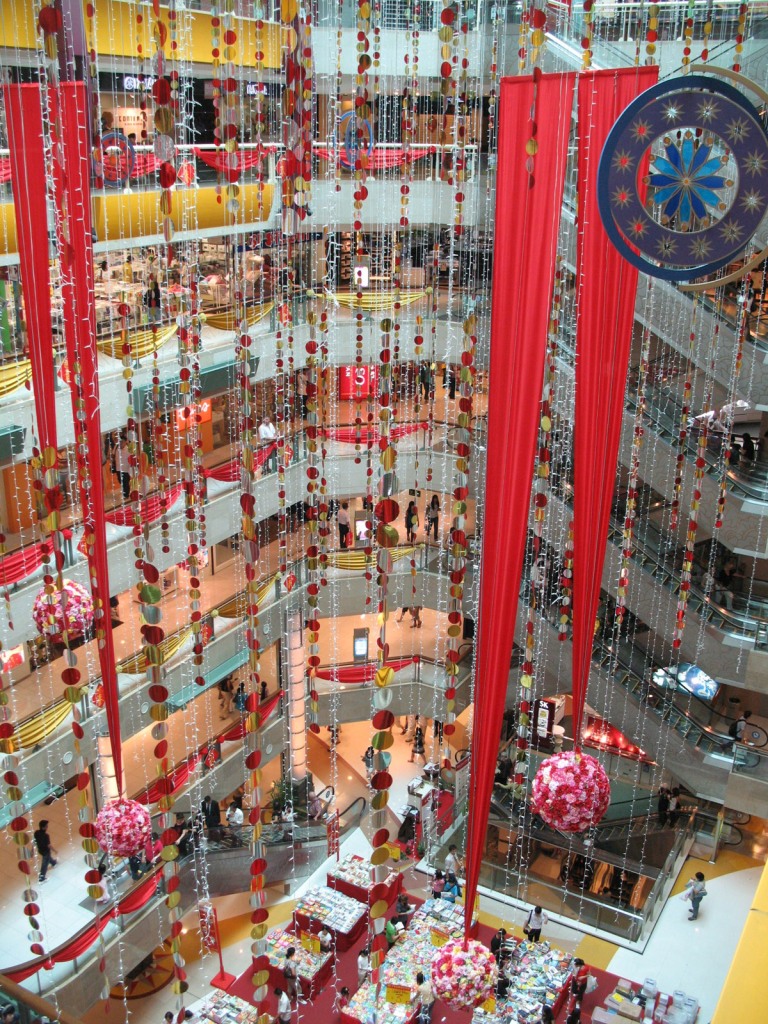
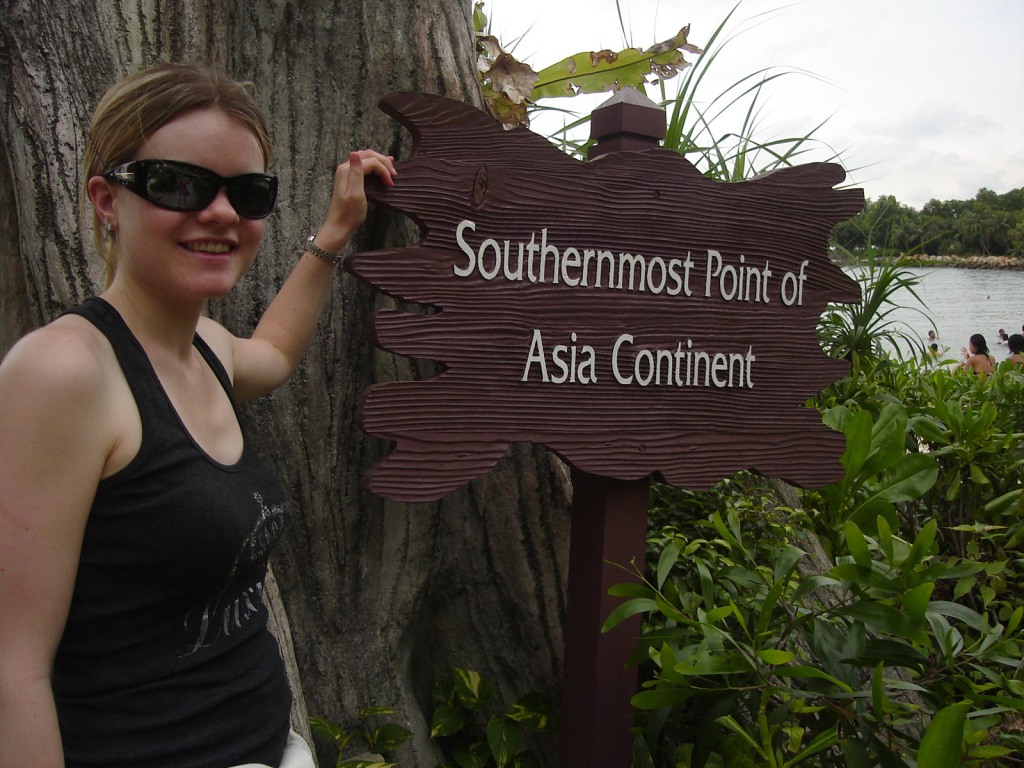
As well as taking issue with the standard of English on this sign, I’m not sure how the edge of Sentosa Island counts as the southernmost point of the Asian continent. It’s an island, and so is Singapore itself, but if we’re counting islands, shouldn’t it be Sumatra or somewhere in Indonesia…? There are parts of Singapore and indeed even Sentosa Island, that extend further south.
Night falls quickly and around tea-time in Singapore, this is a shot up the river from Clarke Quay to Riverside Point, another of Singapore’s many shopping centres.
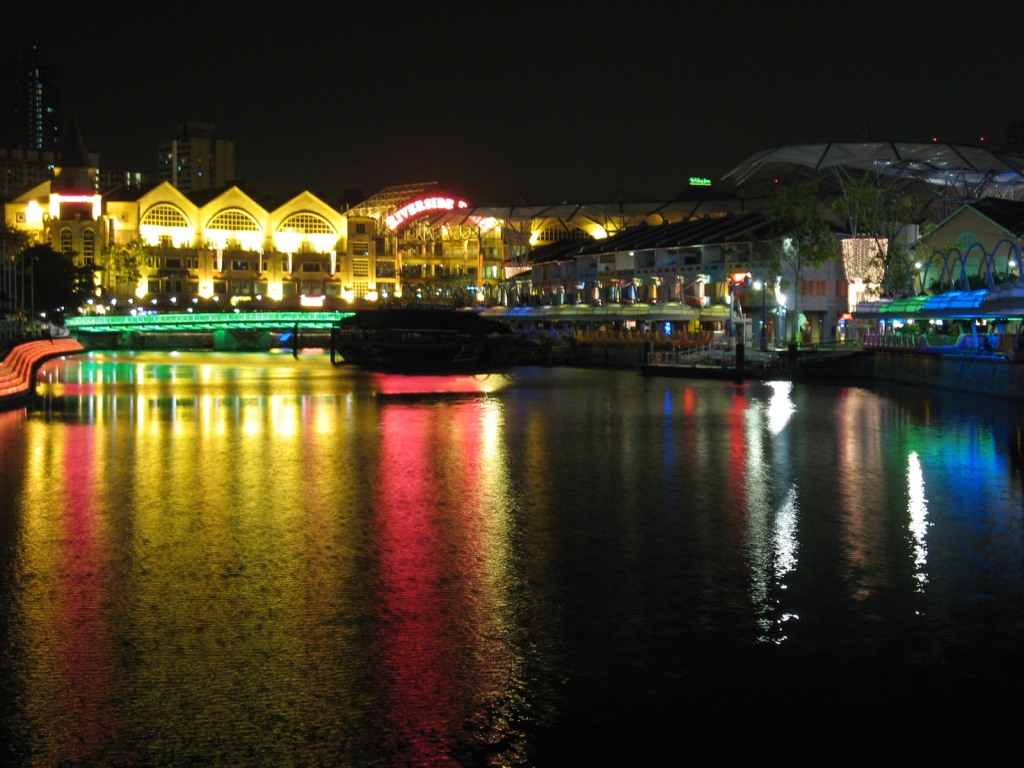
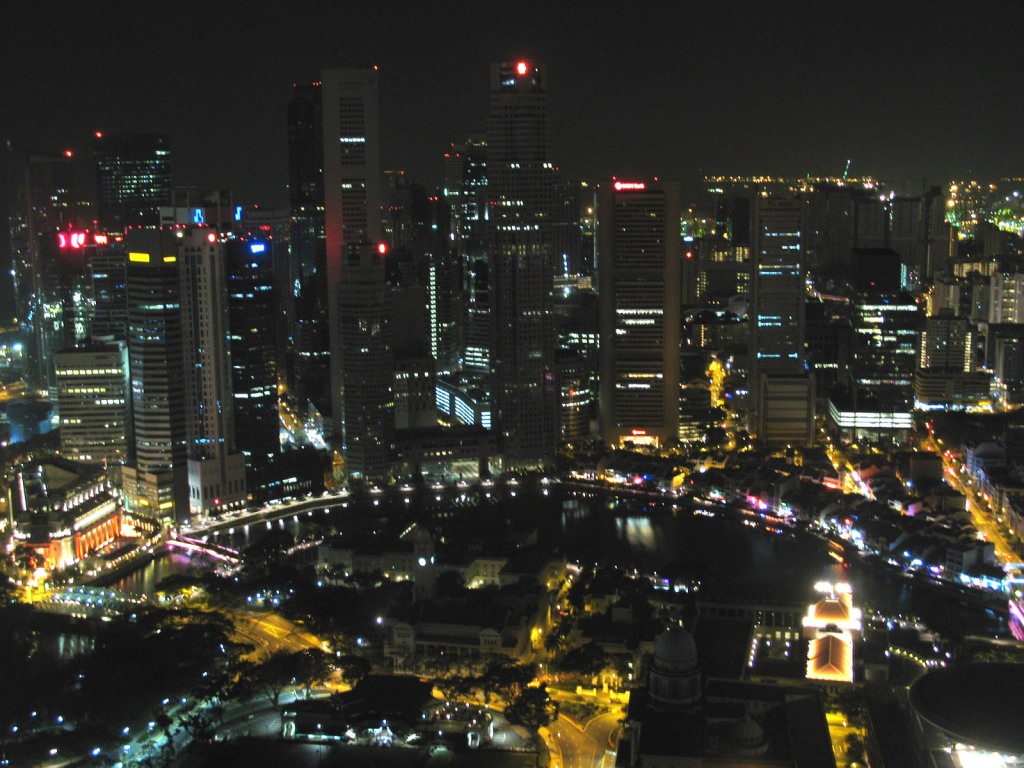
Night view of central Singapore, from the Equinox Bar on the 72nd floor of Swissôtel the Stamford, another hotel named for good ol’ Mr Raffles. It was the world’s tallest hotel upon completion in 1986, only to be overtaken by the Baiyoke Sky Hotel in Bangkok, Thailand in 1997 – an establishment I have also visited.
A final shot of central Singapore, with the Merlion doing what it does best and sending its salty spray into Marina Bay.
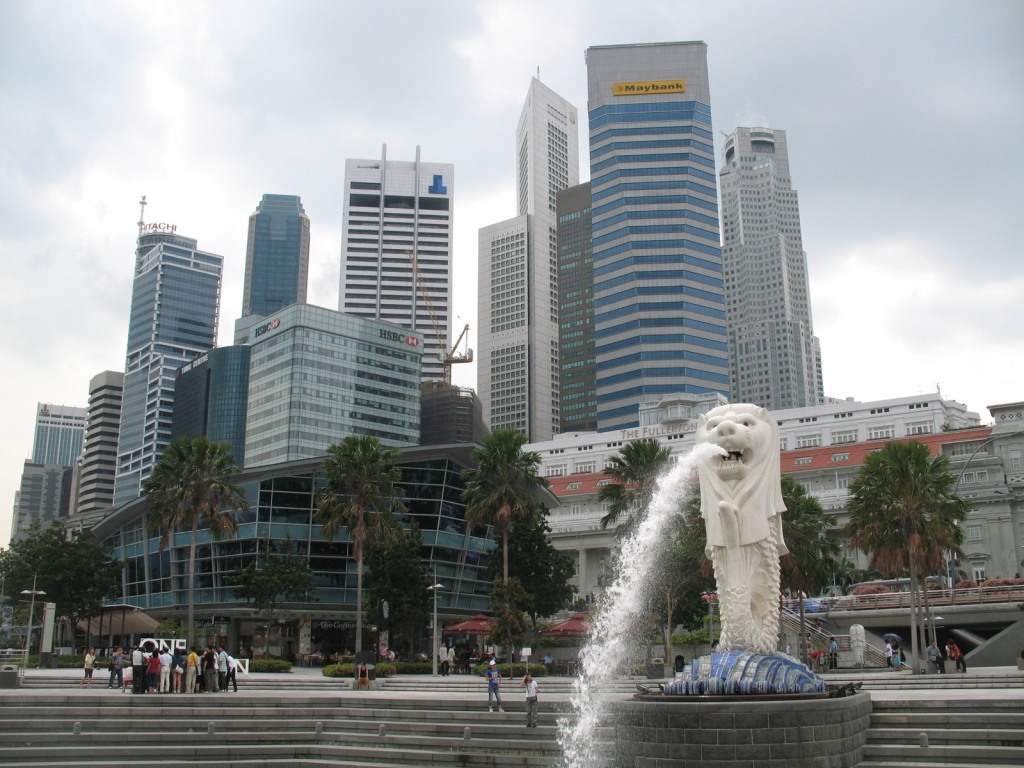
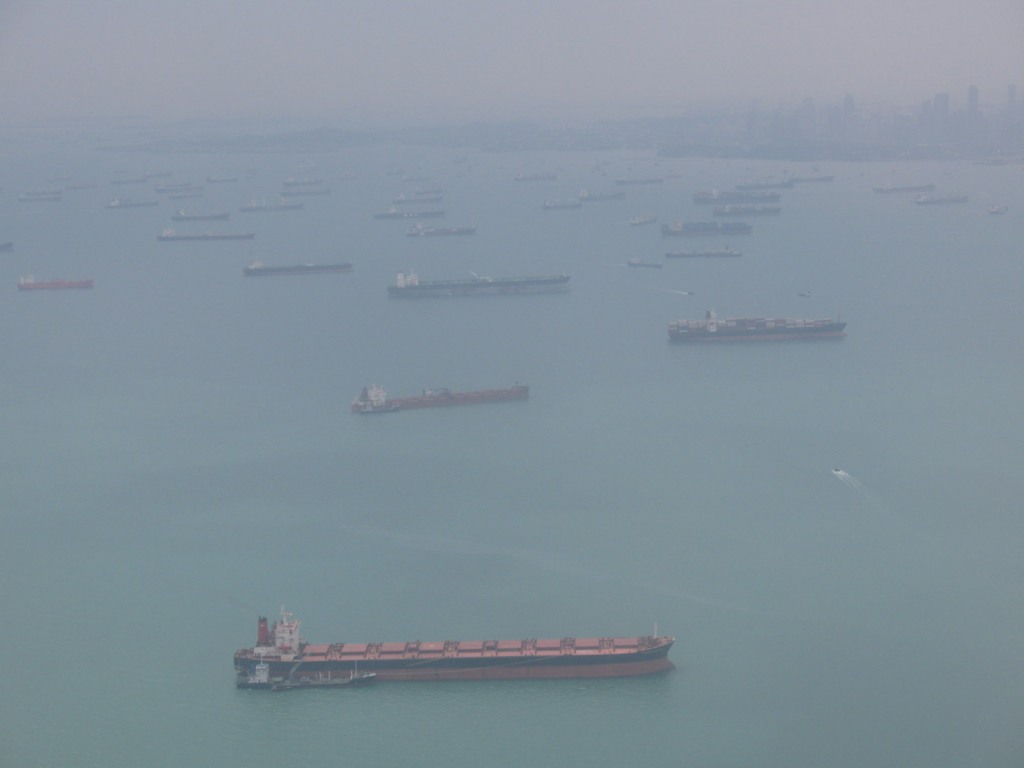
From the air, it’s clear that Singapore is one of the world’s busiest ports, so much so that cargo vessels and tankers are piled up outside the harbour by the dozen.
Created 2007 | Updated 2010, 2023
